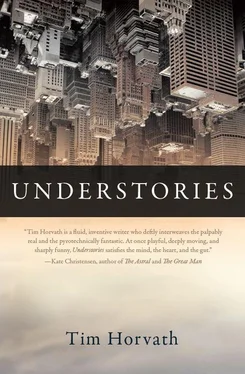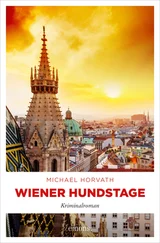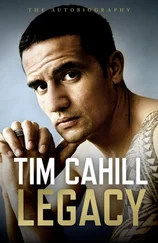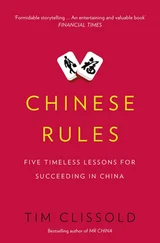My last word of advice: Don’t allude to Punxsutawney Phil or anything related to Groundhog Day, even in jest, anywhere on your application.

It is not what the shadow tells us about the figure but about the ground that ultimately matters.

It’s become harder and harder to catch the interest of the undergrads in Intro Umbro. Thank God for video games. With Lew’s help, I can strip away the shadows from fight scenes to expose how ridiculous and cartoonish their so-called virtual worlds are sans proper shading. And from there, I segue right into painting before they can object — first the Mona Lisa , so familiar that it might as well be a video game, the eyes tracking them as if they’re being controlled by some remote joystick. I point out how da Vinci steeps her outfit in shadow, captures the sweep of her hair, dribbles it down her neck, pits shadows at the corners of her cheeks, forcing them to vie with one another, dramatizing the enigma of her emotions.
Next up it’s Dolcinaux’s untitled work, commonly Paripurgferno , (1774), that magisterial reinterpretation of the moment wherein Virgil admits Dante into Purgatory. Where Dante strips Virgil of his shadow, leaving his metaphysical status a mystery, Dolcinaux sends it back toward Hell, adding the likenesses of the shadows of a terrace and a sphere that aren’t in the painting. From notebooks, we know that Dolcinaux believed Dante got it wrong, that hellish circles, purgatorial terraces, and paradisal spheres ought to have been combined into one, a sort of folded triptych of translucent panels. He didn’t have translucent panels, so he did the best he could, his quarrel with Dante writ large here. If I’ve done my job right, some students are still awake by the time I’m done explaining this.

In my usual spot in the library once, bleary after hours of staring into one book or another, I fell into a trance. It was as if something had pulled some of the ink partway off the page and it was hovering between the paper and my eyes. As I tried to hold it aloft, it struck me that the choice of black as the near-universal color of print was no mere convention, no mere appeasement of the eyes. My epiphany: Printed words were the shadows of referents. Things: rock, sand, onion. Ideas: carpool, justice, maximization, irrevocability. Paragraphs were composite shadows of the scenarios and subjects they captured: the overwhelming richness and messiness of the world distilled to bare, chiaroscuroed necessity. Sure, imagination, not eyes alone, was required in reconstructing the original. Yet in my carrel at that moment, I swore I could see the strand of beach rising off the page, shells strewn everywhere, jagged watermarks and slick seaweed pods, and could feel the onrush of surf, salt spatter, and greedy undertow, and I suspected I’d hit on something nontrivial. Newly awake and trembling with cold and not a little fear, I gathered my belongings and moved quickly past the unsuspecting undergrads, their heads buried in books, and exited. My manic gait mirrored the fervor of the conjecture: if words were shadows, then all fields were umbrology, all knowledge a strain of the umbrological, and all of us of a scholarly bent spend our lives peering at shadows. And what, then, did this suggest about the Bible and the Koran and the access they might offer to the sacred? In the distance were evergreens with what little snow they hadn’t yet shed and the gangling deciduous trees with their intricate interweavings, neuronal branchings. I saw the agriculture complex with its various roofs covered with swatches of snow, then the purple bruise of a cloud bank unfurling across the sky, then the orange glow like something from another world, and then I tried to see before me a page, the page, with these words upon it. As I neared the parking lot, its blue signs with white lettering felt discordant, and I fell in among a crowd arriving for or leaving a game. There was a honk and someone leaned out of a car and yelled, “Ursula’s not the whore, I am!” and everyone in earshot erupted in laughter. At once, my insight shriveled into preposterousness like a balloon surrendering, and I felt ridiculous, all the more so as I, too, was laughing along. I haven’t returned to that idea since; maybe someday.

There was a woman once, though. A couple of flings but only one, really (I don’t count my sundial maiden). Valerie stayed awhile — months. She got me to talk about things I never had, try things, foods — Indian, Tibetan, Moroccan — whose existence I’d had only a vague awareness of before. She took me out to a ball game, prodding me every few hitters with little quizzes about what had just happened. At museums, she’d take me by the shoulders and gently pull me away from the canvas, forcing me to take in paintings at a sweeping glance and describe how they made me feel. She made me carry her bags, restock her lip balm, sniff her slippers, all of which I have to admit I enjoyed. Together, we salvaged a dog, Saskia, from the ASPCA, gave her a home, and even cured her of the habit of peeing at the slightest jarring sound.
Val didn’t even mind my endless discoursing about shadows, though she told me once she preferred rainy days because on them I looked at her more directly. She talked about us relocating to Seattle. Maybe there I could shed my strange “wandering eye.” She only half-believed me when I insisted it was shadows I was watching askance instead of other women. Somehow my gaze would be pulled in the direction of the most stunning or scantily clad (so she claimed — I hadn’t noticed), and later that evening she’d be sobbing or, as the months went on, brooding in ruffled distraction.
Once, watching her apply mascara, I pointed out that makeup was nothing more than the insinuation of shadows onto the face to feign the signs of youth. I said this as I might have to my undergrads — the type of assertion they’d record dutifully, and which every so often incited them to lively discussion and intellectual sparring — although afterward I have suspected that I may have meant to hurt her for some reason. At the time, her brushstrokes held steady. But a day later, she announced that nothing — no therapy, no medication, no aphrodisiac, no self-help book, no spontaneous trip — could bridge the gulf that lay between us.

Rasmussen, president of the university, has staked out Intro Umbro and pulls me into an empty adjoining room after I dismiss them, shutting the door behind him. He doesn’t bother flipping on the light. “Glenn,” he says, appearing troubled, maybe slightly haggard. “I wanted to feel you out on this one. What’s the mood? What is it going to take today with Lew?”
“Your guess is as good as mine,” I shrug. “He has a lawyer. We’re no longer communicating directly.”
“I see.” He mulls this over. “How can I sweeten the pot.” It is more statement than question. I’m reminded anew of how unctuous I’ve always found him. Never a glimmer of interest in our departmental offerings, goings-on. Quick to pardon a plagiarist whose parents are paying in full. “Look,” he continues, “I want to be fair to him, and fair to the university.”
“Of course.”
“There’s one more thing, Glenn.” His voice falls to a hush, and I can hear the din of students milling about between classes. “I’ve had some people contact me. Homeland Security. This is in the strictest of confidence. Obviously, this algorithm is, you know, really something.”
Читать дальше













